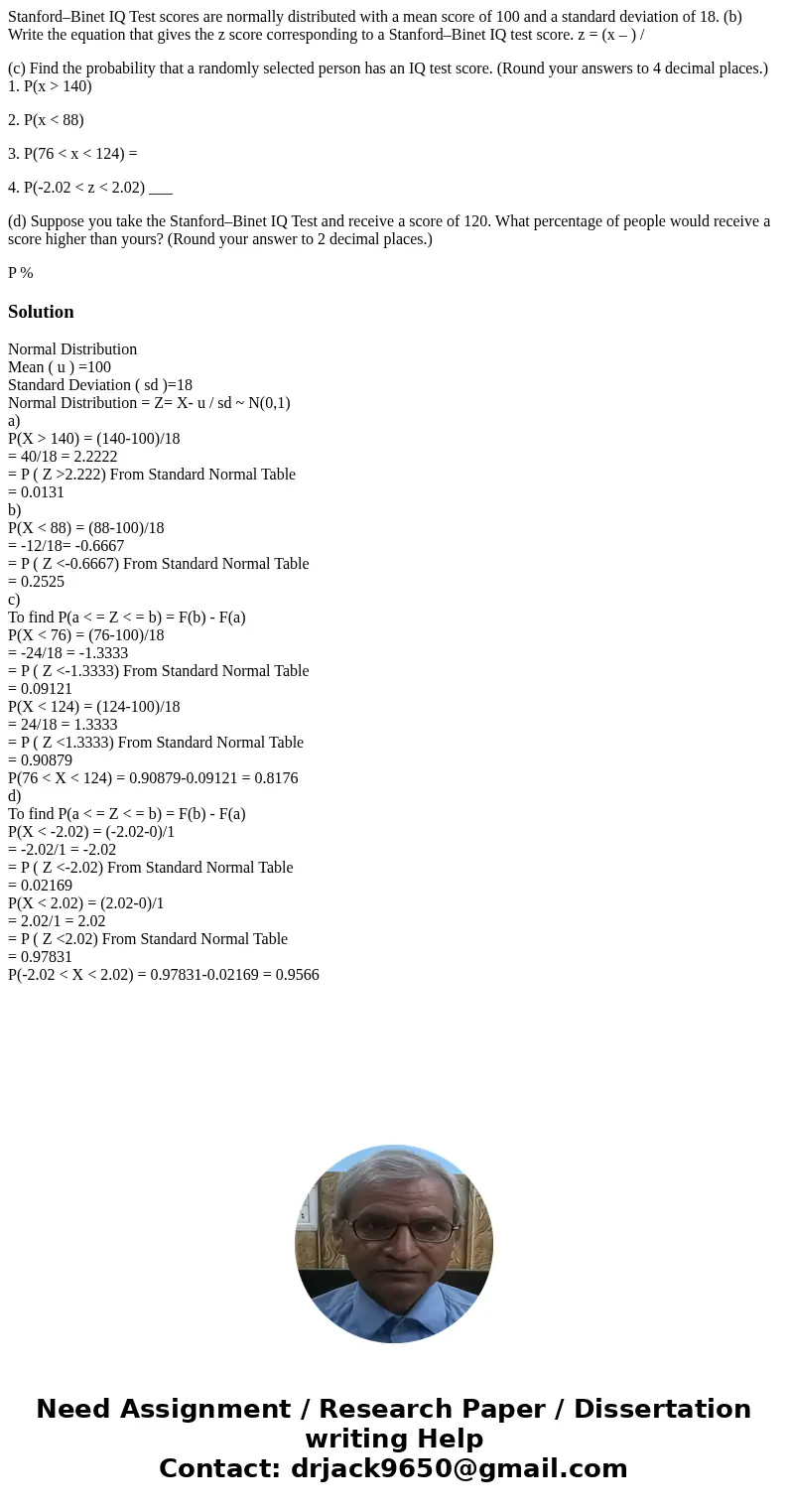StanfordBinet IQ Test scores are normally distributed with a
Stanford–Binet IQ Test scores are normally distributed with a mean score of 100 and a standard deviation of 18. (b) Write the equation that gives the z score corresponding to a Stanford–Binet IQ test score. z = (x – ) /
(c) Find the probability that a randomly selected person has an IQ test score. (Round your answers to 4 decimal places.) 1. P(x > 140)
2. P(x < 88)
3. P(76 < x < 124) =
4. P(-2.02 < z < 2.02) ___
(d) Suppose you take the Stanford–Binet IQ Test and receive a score of 120. What percentage of people would receive a score higher than yours? (Round your answer to 2 decimal places.)
P %
Solution
Normal Distribution
Mean ( u ) =100
Standard Deviation ( sd )=18
Normal Distribution = Z= X- u / sd ~ N(0,1)
a)
P(X > 140) = (140-100)/18
= 40/18 = 2.2222
= P ( Z >2.222) From Standard Normal Table
= 0.0131
b)
P(X < 88) = (88-100)/18
= -12/18= -0.6667
= P ( Z <-0.6667) From Standard Normal Table
= 0.2525
c)
To find P(a < = Z < = b) = F(b) - F(a)
P(X < 76) = (76-100)/18
= -24/18 = -1.3333
= P ( Z <-1.3333) From Standard Normal Table
= 0.09121
P(X < 124) = (124-100)/18
= 24/18 = 1.3333
= P ( Z <1.3333) From Standard Normal Table
= 0.90879
P(76 < X < 124) = 0.90879-0.09121 = 0.8176
d)
To find P(a < = Z < = b) = F(b) - F(a)
P(X < -2.02) = (-2.02-0)/1
= -2.02/1 = -2.02
= P ( Z <-2.02) From Standard Normal Table
= 0.02169
P(X < 2.02) = (2.02-0)/1
= 2.02/1 = 2.02
= P ( Z <2.02) From Standard Normal Table
= 0.97831
P(-2.02 < X < 2.02) = 0.97831-0.02169 = 0.9566

 Homework Sourse
Homework Sourse